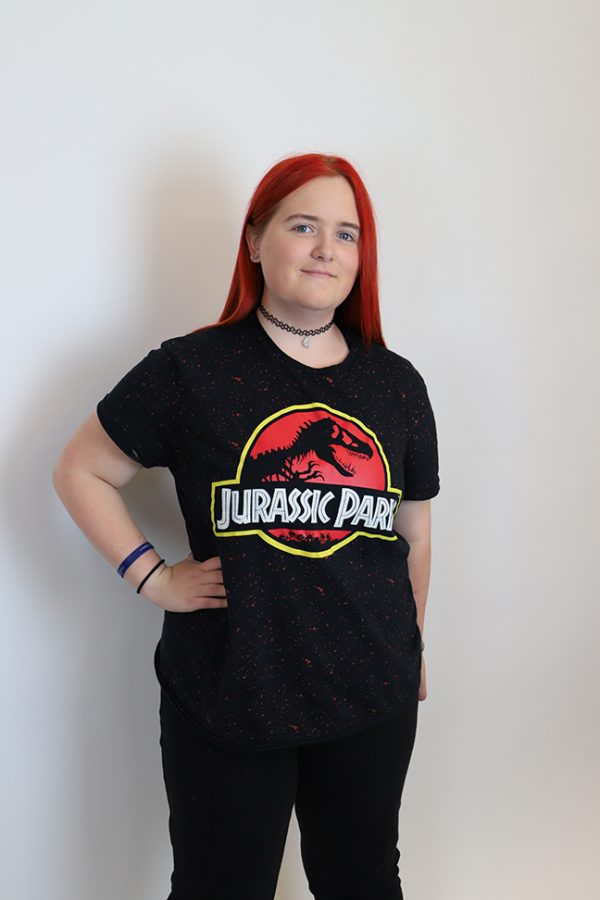A High-Tech Life
October 30, 2018
In fourth grade, Laura Weaver was diagnosed with type 2 neurofibromatosis (NF2), a hereditary disease that causes noncancerous tumors in the brain and along the spinal cord. She had two surgeries in fifth grade to remove a tumor on her left hearing nerve that were successful but resulted in the loss of hearing in her left ear. However, this was not a forever parting with the hearing in that ear.
“Last year, in freshman year, I decided that it was the time to get a cochlear implant. So now I am technically a cyborg,” Weaver said.
A cochlear implant is a two-part device that has an inner magnet that connects to the outer detachable microphone. The microphone picks up sounds and turns it into signals the brain can understand, which it sends through the its magnet into the magnet and corresponding device under Weaver’s skin and so to her brain.
“Lately my brain has started to understand the signals, but it doesn’t totally get it yet. I can hear the A sound, the long O sound, and the S sound. For now, that’s it, but my brain is supposed to hear more soon,” Weaver said.
Because of the amount and location of the tumors, this might not be the only implant she gets.
“The whole reason that we discovered I have NF2 is because I have a tumor in my left eye. It’s not doing anything, but I have the left eye of a sixty-year-old,” Weaver explained. “When I’m older I’m supposed to get some form of technology in my iris that will help me see. So by the time I’m an adult, I will really be a cyborg because I’ll have a bionic ear and eye.”
Since there is another tumor on the hearing nerve in her other ear, it’s likely that she will be completely deaf by the time she’s twenty unless the implant works. This will have a direct effect on her career of choice.
“I am a musician, so I’ve been told that my future in music is unlikely. However, I am not scared at all since I know that music is what I have to be doing so it doesn’t stress me out. I’m going to be in music one way or another even if I’m deaf,” Weaver said.
Part of her determination comes from her synesthesia, which is the brain interpreting one sense as another. Weaver’s synesthesia takes the form of seeing sounds and music as color. “My brain associates music with color, which is one of the many reasons I will not leave music, no matter what.”








Heidi Curnutt • Nov 19, 2018 at 8:15 am
This was really interesting. Loved learning more about Laura.